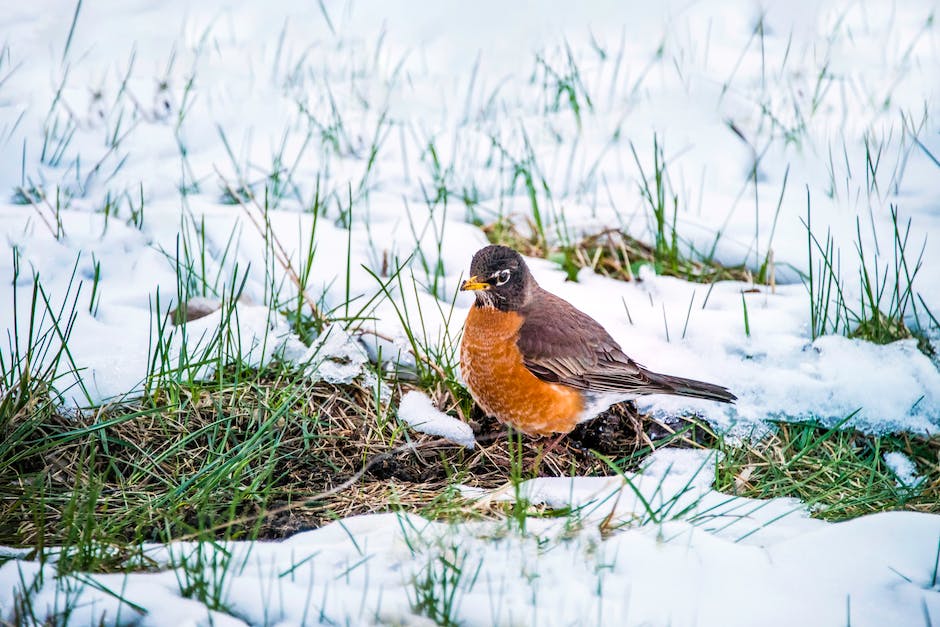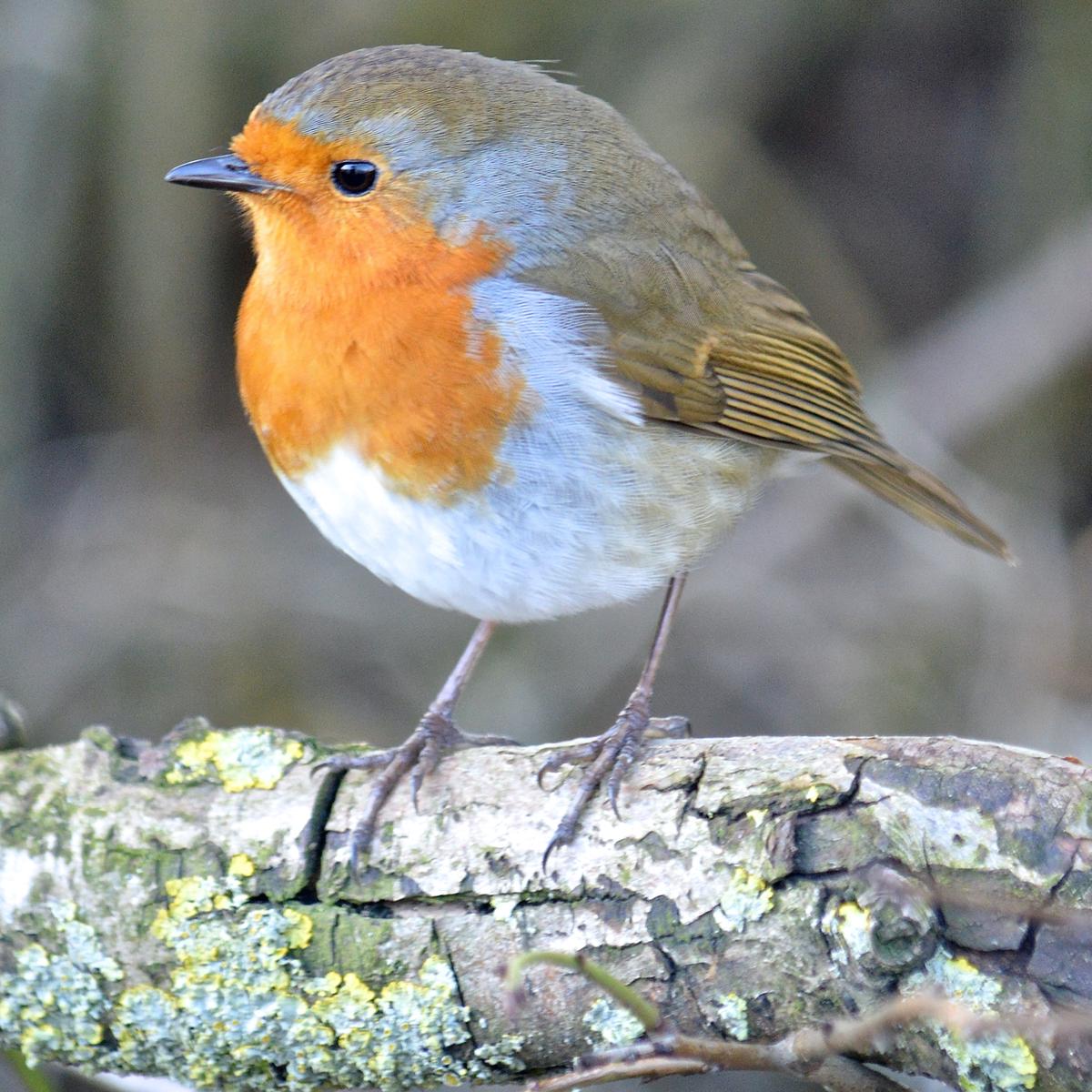Winter Feeding Habits of Robins: A Detailed Guide

Winter can be a challenging season for robins, as this time of the year is associated with scarcity in their primary food sources. As temperatures drop, these industrious birds adjust their dietary habits to ensure survival. This paper explores the fascinating adaptability that robins demonstrate during the colder months, including their resourcefulness in finding new food sources. A comprehensive list of winter foods that robins consume during the harsh conditions is provided, plus observations from ornithologists and bird enthusiasts about the versatility of the robin’s winter nourishment.
Changing Diets: How Robins Adapt to Winters
Unveiling the Winter Survival Secrets: A Robin’s Dietary Switch
As we immerse ourselves in the enchanting world of bird watching, one can’t help but be intrigued by the rosy-breasted bird that seems to hint at the arrival of spring. Yes, they are those handsome American robins (Turdus migratorius), known for their distinct coppery-red belly and cheerful songs. One of the most fascinating aspects of these songbirds lies in how their diet changes as frosty winter sets in. Without further ado, let’s hop into this unfolding avian drama!
It’s autumn, the leaves are falling, and the chill in the air signals our robin friends that it’s time for a dietary overhaul. In the warmer months, robins primarily thrive on a protein-filled menu consisting of earthworms, caterpillars, beetles, and other small invertebrates. They even indulge in an occasional small snake or frog. However, as the ground hardens making it almost impossible for robins to extract their earthy delicacies, these sturdy little birds adjust by switching their dietary focus.
From tracking their meal through the soft soil to scanning the leafless trees, the winter finds robins relying heavily on a variety of fruits and berries. Crabapples, sumac fruits, and hawthorn berries are some of the common foods that robins feast on during this time. But why this shift?
The reason is two-fold. Firstly, by consuming fruits and berries rich in sugar, robins can quickly metabolize them into heat, thereby resisting the biting cold. Secondly, this plant-based sustenance ensures a reliable food source when the grounds are frozen or snow-covered, making foraging for worms and insects practically impossible.
Over the years, observed patterns have been fascinating. One day, robins might consume large quantities of fruit to store energy, while the following days they utilize these energy reserves, reducing the need for constant foraging. This approach helps them conserve energy when the temperature plummets.
However, this dietary shift isn’t just random or opportunistic. Their fruit-picking spree is often selective. Studies suggest that robins tend to opt for native fruits that have fermented over the non-native ones, leading to a potential “drunk” state brought on by the consumption of these slightly fermented fruits!
Contrary to common belief, robins don’t “fly south” for winter like many other birds. Instead, they usually gather into large communal roosts at night to keep warm and only migrate if they can’t find enough food – their adaptability extending beyond their diets. Observing this intricate tapestry of survival measures is a heartwarming study in resilience and adaptability, a testimony to the ever-astonishing wonders of mother nature.
So, the next time you spot a robin flitting among the snow-clad trees, remember, within that tiny beating heart is a tremendous instinct for survival, powered in large part by their strategic dietary swings. Robins remind us, in their unique way, that adapting and overcoming are indeed the keys to enduring the harshest of winters.

Robins’ Winter Foods: A Comprehensive List
Diving into the specifics of what robins consume during the frigid winter months world can open a whole new window of understanding about these enduring creatures. Beyond the broad plant-based diet, it’s intriguing to decipher their favorite selections during this challenging season.
While fruits and berries are a staple, not all fruity offerings are created equal in the eyes of American Robins. One of their top picks for sustenance in winter is the crabapple. A robust species thriving under harsh weather conditions, crabapple trees laden with small, dense fruit serve as an excellent food source. Due to their size, the fruits remain on the tree longer than most, thus providing robins with a dependable food source deep into winter.
Other winter favorites of robins include hawthorn fruits, holly berries, and juniper berries. Their tendency towards these varieties can be tied to three primary factors: accessibility, energy content, and ease of consumption. The high sugar content in holly and juniper berries, for example, provides the much-needed energy boost for robins’ survival during harsh colds.
Beyond fruits and berries, robins also rely on other plant components in winter, though lesser-known. They are not opposed to gorging on tree bark, specifically from deciduous trees, and their buds. Robins also feast on the seeds from cones of coniferous trees, providing a reliable food source when the snow blankets the ground and hampers access to softer delicacies.
Contrary to popular belief, robins don’t entirely shun the animal protein during winter. They feed on readily available insects like beetles and caterpillars, as well as spiders, snails, and earthworms if weather conditions permit. These invertebrates contribute vital protein and help robins replenish the much-needed body fats to withstand freezing temperatures.
Another surprising but crucial part of a robin’s winter diet is invertebrates. During bouts of warmer winter weather, robins might be seen on the ground, partaking in a feast of dormant insects or probing mulch beds for hiding earthworms. This addition of animal protein helps them break the monotonous diet of fruits and supports their energy needs.
Robins’ winter feeding behavior is a gripping blend of adaptability and survival. The variety in their diet, coupled with their survival tactics, presents a fascinating portrait of robins’ ecological role and their resourceful nature. Be it the ruby red of a holly berry, the dormant insect hidden beneath the snow, or the tough bark of a deciduous tree, robins leave no stone unturned in their quest for survival. Their dietary preferences and adaptability give us more reasons to appreciate these feathered friends and their important role in maintaining ecological balance.

Photo by axholmephotography on Unsplash
Helping Robins Survive the Winter: Feeding Tips and Tricks

Robins demonstrate a remarkable capacity to adapt and survive in harsh winter conditions, showcasing impressive survival skills. A commendable part of their winter resilience is their flexible diet. The ability to transition from one diet type to another as resources dwindle is extraordinary. For bird watchers and hobbyists, ensuring that these creatures have access to enough winter foods can be a fulfilling endeavor. By following expert advice, choosing the right bird feed, and maintaining clean bird feeders, we can all help robins thrive in the challenging winter months.



